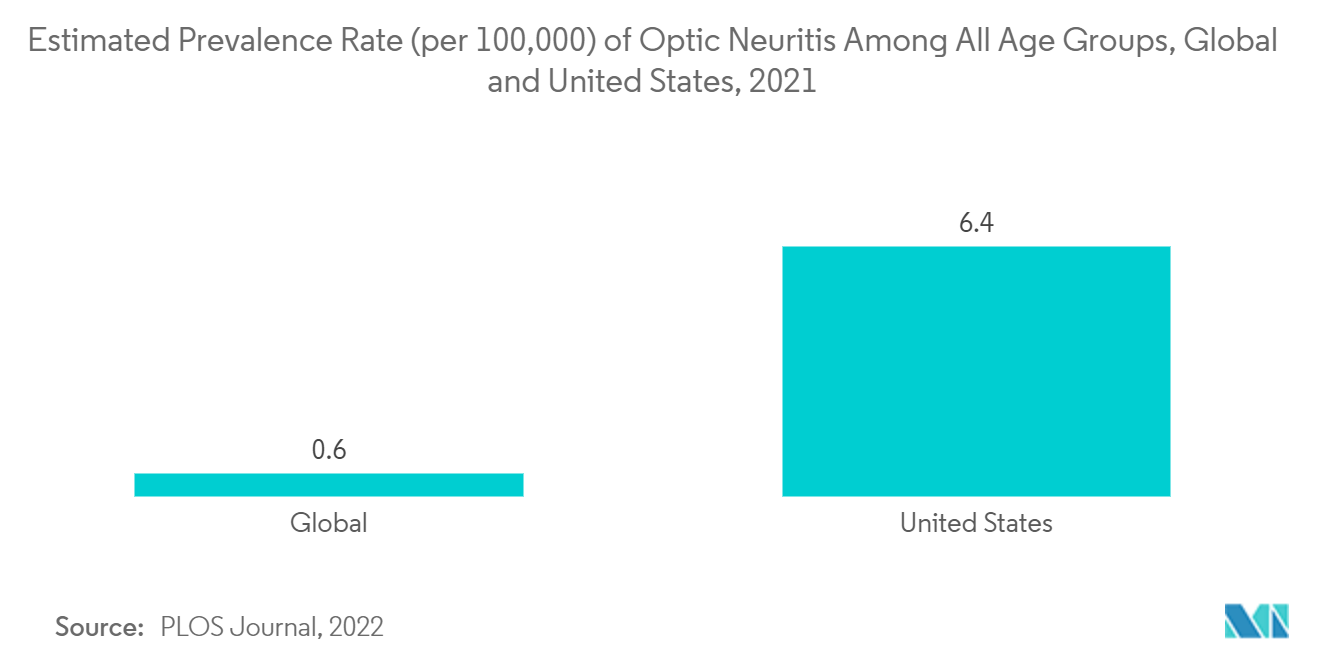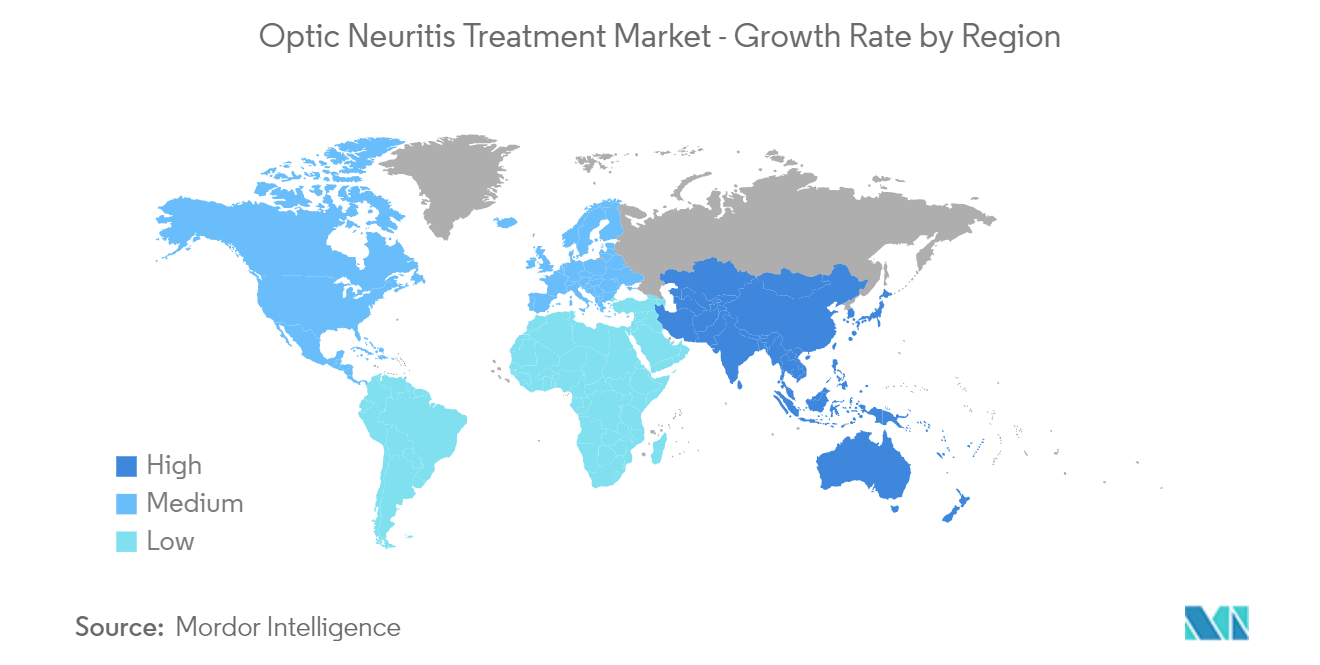Market Trends of Optic Neuritis Treatment Industry
This section covers the major market trends shaping the Optic Neuritis Treatment Market according to our research experts:
Steroidal Therapy Segment is Expected to Witness Considerable Growth Over the Forecast Period
Steroidal therapy includes corticosteroid drugs used to treat optic neuritis, which have proven efficacy for decades. Corticosteroids are a type of anti-inflammatory drug. They are typically used to treat optic neuritis. Specific corticosteroids include the medications cortisone and prednisone. Corticosteroids are man-made drugs that closely resemble cortisol, a hormone that the adrenal glands naturally produce. Corticosteroids are often referred to by the shortened term "steroids." Steroids might be given locally, to the precise place where a problem exists, or systemically.
The increasing cases of optic neuritis and the increasing use of steroidal therapy for the treatment are the major factors propelling the segment's growth. For instance, according to the Optic Neuritis Foundation Inc. report published in 2021, adults between the ages of 18 and 45 are most susceptible to optic neuritis. Moreover, females are said to be more inclined to optic nerve inflammation as compared to males. However, only 3.0% of the population suffering from optic neuritis is expected to lose complete vision and go blind. Furthermore, the increasing use of steroidal therapy for the treatment of optic neuritis is also expected to spur segment growth. For instance, as per the research study published in JAMA Neurology in 2021, intravenous (IV) administration of corticosteroids is considered the standard of care in the treatment of acute optic neuritis. Furthermore, as per the research study published by Cochrane in 2021, corticosteroids are widely used in the treatment of optic neuritis due to their anti-inflammatory effects. Moreover, according to the research study published by Science Direct in October 2021, steroidal therapy is considered the first line of treatment for optic neuritis. Thus, increasing the use of steroidal therapy for the treatment of optic neuritis is expected to boost segment growth over the forecast period.

North America is Expected to Hold a Significant Share Over the Forecast Period
North America is expected to hold a significant share in the optic neuritis treatment market due to the high disease prevalence, availability of reimbursement, and growing awareness among the population regarding multiple sclerosis and optic neuritis in the region. For instance, as per the study published in the Journal of Neurology in 2021, the annual incidence of optic neuritis in the United States is found to be around 5/1,000,000, with an estimated prevalence of 115/1,000,000. Furthermore, technological advancement, the launch of new treatment options, increasing healthcare spending, and the presence of well-established healthcare infrastructure are also fueling the growth of the overall regional market to a large extent.
Key product launches, a high concentration of market players or manufacturers' presence, acquisitions and partnerships among major players, and product approvals in the United States are some of the factors driving the growth of the optic neuritis market in the country. For instance, in August 2020, the U.S. FDA approved Enspryng (satralizumab-mwge) for the treatment of neuromyelitis optica spectrum disorder (NMOSD) in adults with a particular antibody in patients who are anti-aquaporin-4 or AQP4 antibody-positive. Enspryng is the third approved treatment for the disorder. Similarly, in August 2020, Novartis announced that the US FDA had approved Kesimpta (ofatumumab, formerly OMB157) as an injection for subcutaneous use for the treatment of relapsing forms of multiple sclerosis (RMS) in adults. Thus, such product approvals may create new opportunities for the market; therefore, considerable market growth is anticipated in the United States over the forecast period.


